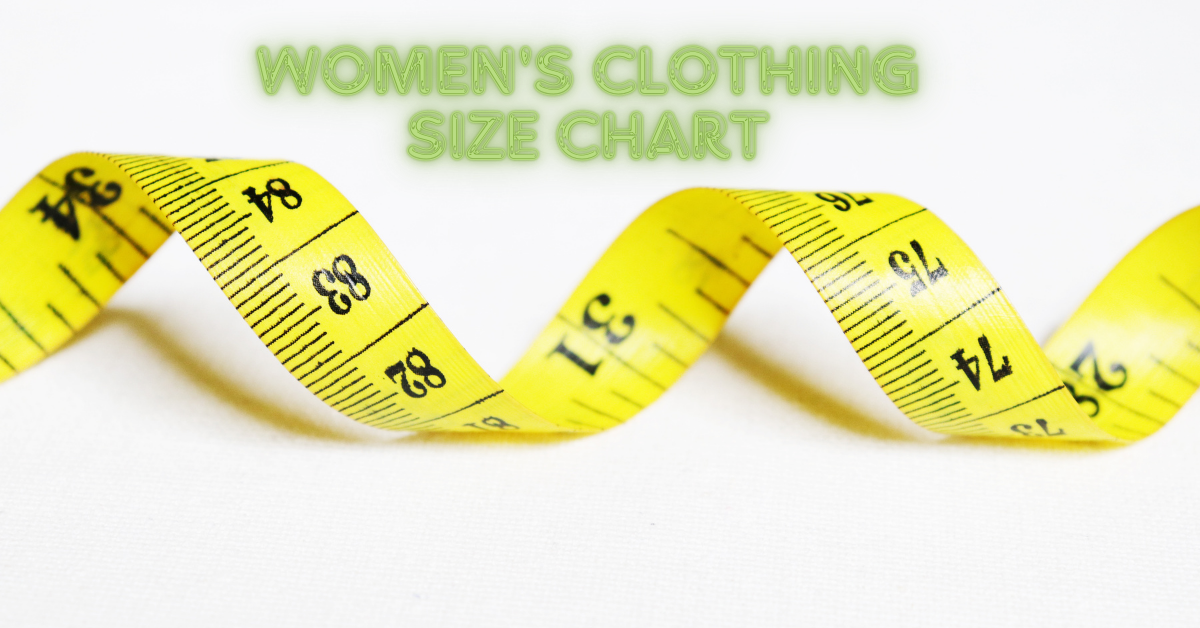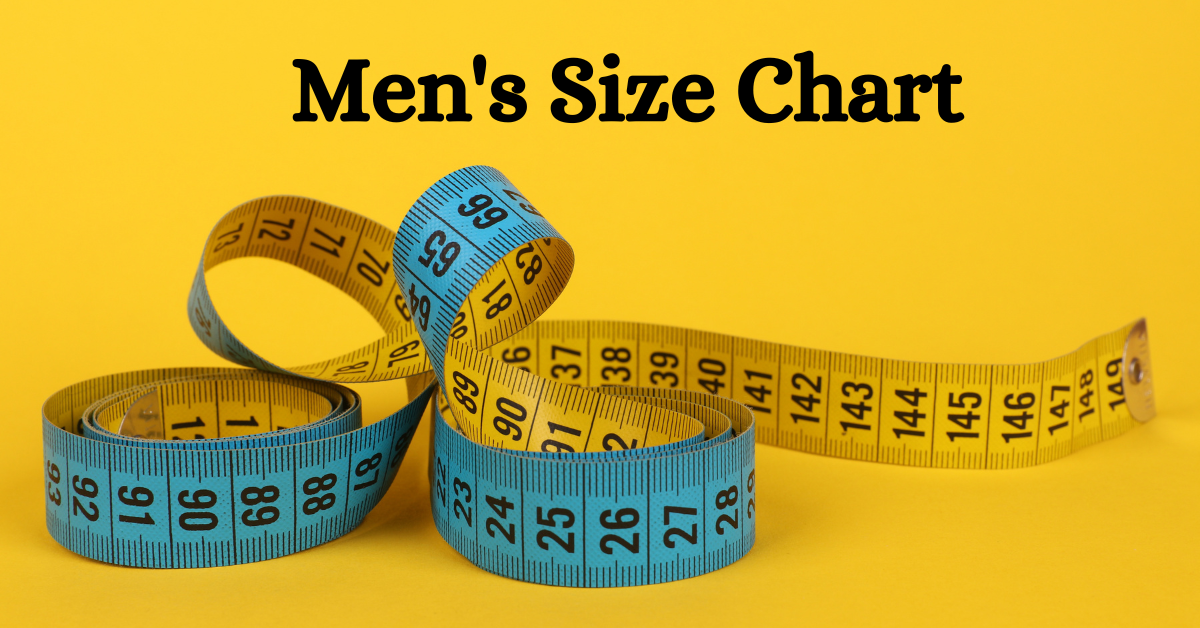Spotting the appropriate size for women’s pants can, at times, be a herculean task given the many labels of women's pants measurements and the diverse ways in which different brands measure their commodities. It is important to know how sizes are represented numerically in the size chart for women’s pants and to be aware of proper ways to take measurements, as it can greatly change the shopping experience.
This is a step-by-step guide on how to understand women's pants measurements ranging from M to XXXL and beyond – you’ll never again struggle to find just the right size.
Size Chart for Women's Pants
It is important to understand the relation between different sizes in the size charts for women’s pants in order to ease your shopping process. Here’s a breakdown of common pant sizes in the women's jeans:
1. XXS Size in Number
According to the pant size chart female, this tag is associated with a size 00 or zero size. This site is meant for those who have petite frames and are lean physically.
2. XS Size in Number
Typically, XS in the size chart for women’s pants merchandise clothes up to size 2 (waist size 24-26) is especially recommended for people with a small frame.
3. S Size in Number
S generally corresponds to sizes 4 to 6 (waist size 26-28). As per the women's pant size chart, a small size is good if you’re not exactly thin but have a small frame or a bit of a curve.
4. M Size in Number
M size in the women pant size chart represents sizes 8 to 10 (waist size 28-30). This size is for average-built people, and it has some extra space from the small sizes.
5. L Size in Number
L in size chart for women’s pants covers sizes 12 to 14 for fuller figures (waist size 30-33), that is, those who may require more space to move comfortably.
6. XL Size in Number
Available in sizes 16 to 18 (waist size 33-36) for body types with an increased area and are designed for people who require more volume in their clothes.
7. XXXL Size in Number
Conventionally, XXXL is designed for waist sizes 40, providing enough space for those who are plus size or simply those who require more comfort.
8. XXXXL Size in Number
XXXXL in the size chart for women’s pants mainly covers pants for waist size 42, a particularly large size that is ideal for individuals who need more room than the above size offers.
9. XXXXXL Size in Number
This waist size in the women's pant size chart fits number 44. This size is ideal for those with plus size as it allows more space.
10. XXXXXL Size in Number
Available for waist sizes 46 and above, it provides an exceptionally loose or baggy look for those with large frames.
How to Measure Yourself for Accurate Sizing
There are several ways to measure yourself for appropriate sizing, as per the women's pant size chart.
Step-by-Step Measurement Guide
It has been said that accuracy is important when it comes to measurements to get the right fit. Here’s a detailed guide to measuring yourself properly:
Bust Measurement:
You must be standing with your hands relaxed at your sides throughout the test. Have the measuring tape run over your bust line, making sure it is comfortable without being tight, and the end of the measuring tape is parallel to the ground. It is used to determine tops and dresses to ensure they are comfortably fitted.
Waist Measurement:
Figure out where your natural waistline is- is it just above the navel and just below your ribs? Take your measurements around this area using the tape measure with a relaxed, tight, snug around your body.
Hips Measurement:
Take the tape around the fullest part of your hip and buttock area again. Make sure the tape is parallel to the ground and touching the skin tightly without making it feel painful to stick. This is particularly important when it comes to pants and skirts (it’s advisable to get measured for them).
Inseam Measurement:
Standing a little with your legs apart, take a measurement from the top of the inner thigh and down to the bottom of the ankle. This will assist you in avoiding pants that are slightly tight, too short, or, on the other extreme, pants that are extremely long.
Common Measurement Mistakes and How to Avoid Them
There are many measurement errors that can occur while taking the right size from the ladies' pants size chart, and here’s how to avoid them.
Measuring Over Clothing:
It is vital to always measure on bare skin or, ideally, over-fitted clothes to get your perfect size according to women's jean size chart. Taking measurements over bulky clothes not only encompasses more fabric but takes more length as well.
Using the Wrong Tools:
You should not measure your size using objects that cannot bend, such as a ruler or yardstick. Special measuring tapes can be bent to take measurements of your body.
Incorrect Tape Position:
Ensure the tape is horizontal and not in the form of a coil, as twisted tape will give the wrong dimensions, leading to an incorrect size.
Standing Incorrectly:
Take measurements with feet standing flat on the ground and shoulders brought back while the body is standing relaxed. Do not flex your abdomen or bend your back, as both these postures distort body measurements.
Fit Guides for Different Body Shapes
Choosing the right women's pant size measurements is not just about the digits- it’s also about the outline of your body. Here’s how to identify your body shape and choose the best styles for a flattering fit:
Identifying Your Body Shape:
- Hourglass: It is described by well-proportioned shoulders and hips, as well as a slim waist. When seeking clothing, you will adorn your figure, ensuring that it defines your waist and curves.
- Pear: A pear body type refers to a larger hip size with a smaller waist and shoulder size. Select designs that act as a great equalizer, such as A-line skirts, high-waisted pants, and so on.
- Apple: Apple refers to a body type wider at the shoulder and bust with a more subtle division between the waist and hip-line. Use accessories to define your waist and ensure that the upper part of the body and the lower part are well proportioned and in the correct ratio, such as dresses that hug the body and trousers.
- Rectangle: This refers to a silhouette with straight shoulders with small and equal bust and hip measurements. The aim should be to mimic curves in figures with hugging dresses and belted blazers.
Choosing the Right Fit:
- Tops and Dresses: Such clothes look best on hourglass figures, for which any fitted top or dress is suitable. Pear shapes should go for A-line or empire waist dresses as they enhance the small waist while at the same time having the ability to flatter the hips.
- Bottoms: The pear-shaped physiques should go for pants that are rather loose at the hips and thighs. Women with hourglass figures can opt for pants that are high-waisted to give a beautiful appearance to their waist.
- Outerwear: For apple shapes, the structured jackets that constrict in the middle of the torso must be chosen, while rectangle body types might ‘‘borrow’’ curves by using belted outerwear.
Special Considerations in Sizing
Fabric and Stretch:
Clothing items that use stretchable materials such as spandex or elastane can expand or shrink in size and hence can fit easily. In these types of fabrics, it will be advisable to reduce the size further down slightly. Non-stretch fabrics, on the other hand, might force you to wear your natural size or size up to be comfortable in them.
Seasonal Variations:
Dimensions may differ from one seasonal collection to the other as fabrics change or the ideal layering could change. Sizes may vary depending on the collection, so one should always consult the size guide inherent to a particular collection.
Fit Preferences:
Common size rules are influenced by personal style preferences regarding whether you would like a more stretch fit or choose a larger size. If you are going for a proper fit, go for your size or even a size down, depending on the fabric used.
Frequently Asked Questions
1. How often should I re-measure myself?
One should get measured at least once every six months, and in any instance that one undergoes a massive change in weight or body shape, one should be sure that they are buying the right size.
2. What if the size chart doesn’t match my usual size?
They differ from one brand to another, and therefore, the retailer's size chart should always be relied on. Often they provide standardized measurements (pant size chart female) with which you can compare your measurements and thus arrive at the correct fitting size.
3. Can I return items if they don’t fit correctly?
Almost all the retailers provide for return or exchange, but always consider the store’s return policy before deciding to go and buy clothes as there is always that one item that you found didn’t fit as expected.
4. How do I know if I need to size up for comfort?
If you’re unclear or the fabric isn’t very stretchy, it’s wise to go a size up so you do not feel uncomfortable. This is particularly useful if you hope to wear the particular garment for quite some time.
5. What should I do if a garment fits in one area but not another?
If you wear a garment that has some good fitting in some places, you may find that it has poor fitting in others- you should alter it. Professional adjustments can embrace the enhancement of an ideal fit when the garments fail to provide the same.
To get details about women's pants measurements for all kinds of body shapes and sizes, you can visit Instafab Plus. With our extensive women's pants size charts and myriad looks, getting the right pair of pants is truly effortless. Happy shopping!



